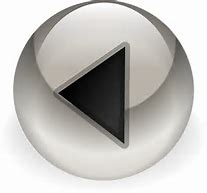







Looking After Your Finds - Reference




Germanic Finds - Hunnish, Ostrogothic, Frankish


Powered By Sispro1

13. PAIR OF OSTROGOTHIC SILVER FIBULAE - FIRST HALF OF V century A.D.
Cast. Rounded triangular headplates, arched bows with pronounced central ridge, long pointed footplate. Headplate decorated by three knobs with three grooves on each. Flat underside with preserved pin and spring mechanism, catch at footplate. L. 2.6" (6.6 cm).
Cast. Rounded triangular headplates, arched bows with pronounced central ridge, long pointed footplate. Headplate decorated by three knobs with three grooves on each. Flat underside with preserved pin and spring mechanism, catch at footplate. L. 2.6" (6.6 cm).
14. PAIR OF OSTROGOTHIC SILVER FIBULAE - FIRST HALF OF V century A.D.
Cast. Rounded triangular headplates, arched bows with pronounced central ridge, long pointed footplate. Headplate decorated by three knobs with three grooves on each. For one fibula: spring mechanism with oxidized iron chunk (iron spring) with preserved original fabric, ancient repair at lower footplate. Other one: spring mechanism preserved, In this example, the pin is missing. L. 3.5" (8.9 cm).
Cast. Rounded triangular headplates, arched bows with pronounced central ridge, long pointed footplate. Headplate decorated by three knobs with three grooves on each. For one fibula: spring mechanism with oxidized iron chunk (iron spring) with preserved original fabric, ancient repair at lower footplate. Other one: spring mechanism preserved, In this example, the pin is missing. L. 3.5" (8.9 cm).


15. PAIR OF GILT SILVER FIBULAE - VI century A.D. - VISIGOTHIC or OSTROGOTHIC
Made of sheet silver, polygon head with three cast, gilt projections, riveted to the plate. Long, sheet silver tapering foot with rib along the symmetry line. Cast bow with pronounced central ridge soldered to head and foot, flanked by gilt bronze plates, stamped in relief, also riveted to the plates. At the rear: lug with an iron axis bar, spring and catch; missing pin for both fibulae. Upper & lower projections on bottom fibula (according to photo) are modern restoration. The left projection on top fibula was broken in half and later restored. L. 6.5" (16.5 cm).
Made of sheet silver, polygon head with three cast, gilt projections, riveted to the plate. Long, sheet silver tapering foot with rib along the symmetry line. Cast bow with pronounced central ridge soldered to head and foot, flanked by gilt bronze plates, stamped in relief, also riveted to the plates. At the rear: lug with an iron axis bar, spring and catch; missing pin for both fibulae. Upper & lower projections on bottom fibula (according to photo) are modern restoration. The left projection on top fibula was broken in half and later restored. L. 6.5" (16.5 cm).

16. PAIR OF GILT SILVER FIBULAE - 6 century A.D. - VISIGOTHIC or OSTROGOTHIC
Made of sheet silver, polygon head with three cast projections, riveted to the plate. Traces of gilding. Long, sheet silver tapering foot with rib along the symmetry line. Cast bow with pronounced central ridge soldered to head and foot, flanked by gilt bronze plates, stamped in relief, also riveted to the plates (only partially survived on one fibula). At the rear: two widely spaced lugs with axis bar, pin with spring. Missing pin for one fibula. Back of the plates reinforced with bronze plates. L. 8.1" (20.5 cm).
Made of sheet silver, polygon head with three cast projections, riveted to the plate. Traces of gilding. Long, sheet silver tapering foot with rib along the symmetry line. Cast bow with pronounced central ridge soldered to head and foot, flanked by gilt bronze plates, stamped in relief, also riveted to the plates (only partially survived on one fibula). At the rear: two widely spaced lugs with axis bar, pin with spring. Missing pin for one fibula. Back of the plates reinforced with bronze plates. L. 8.1" (20.5 cm).
17. GEPIDIC BRONZE BOW FIBULA - SECOND HALF OF VI-VII century A.D. - DANUBE region
Cast. Fan-shaped head plate with seven circular perforations formed by stylized birds' heads: beak of each bird connecting to back of the head of the next one. Arching bow with four longitudinal grooves, flanked by lateral grooves. Foot with stylized sides and a zoomorphic terminal; stamped concentric circles throughout. At the rear are two lugs and an axis bar and pin, oxidized iron chunk (iron spring). Missing pin.
L. 3.7 (9.4 cm).
Cast. Fan-shaped head plate with seven circular perforations formed by stylized birds' heads: beak of each bird connecting to back of the head of the next one. Arching bow with four longitudinal grooves, flanked by lateral grooves. Foot with stylized sides and a zoomorphic terminal; stamped concentric circles throughout. At the rear are two lugs and an axis bar and pin, oxidized iron chunk (iron spring). Missing pin.
L. 3.7 (9.4 cm).
18. GEPIDIC BRONZE BOW FIBULA - SECOND HALF OF 6-7 century A.D. - DANUBE region
Cast. Fan-shaped head plate with central knob and four circular perforations formed by stylized birds' heads: beak of each bird connecting to the back of the head of the next one. Arching bow with four longitudinal grooves, flanked by lateral grooves. Foot with stylized sides and a zoomorphic terminal; stamped circles throughout. At the rear are two lugs and an axis bar and pin, large fragment of original fabric. Missing pin. L. 3.7" (9.4 cm).
Cast. Fan-shaped head plate with central knob and four circular perforations formed by stylized birds' heads: beak of each bird connecting to the back of the head of the next one. Arching bow with four longitudinal grooves, flanked by lateral grooves. Foot with stylized sides and a zoomorphic terminal; stamped circles throughout. At the rear are two lugs and an axis bar and pin, large fragment of original fabric. Missing pin. L. 3.7" (9.4 cm).
19. GEPIDIC BRONZE BOW FIBULA - SECOND HALF OF 6-7 century A.D. - DANUBE region
Cast. Fan-shaped head plate with central knob and four circular perforations formed by stylized birds' heads: beak of each bird connecting to the back of the head of the next one. Arching bow with two wide longitudinal grooves, flanked by lateral grooves. Foot with stylized sides and a zoomorphic terminal; stamped concentric circles throughout. At the rear are two lugs and an axis bar and pin, oxidized iron chunk (iron spring). Missing pin. L. 3.7 (9.4 cm).
Cast. Fan-shaped head plate with central knob and four circular perforations formed by stylized birds' heads: beak of each bird connecting to the back of the head of the next one. Arching bow with two wide longitudinal grooves, flanked by lateral grooves. Foot with stylized sides and a zoomorphic terminal; stamped concentric circles throughout. At the rear are two lugs and an axis bar and pin, oxidized iron chunk (iron spring). Missing pin. L. 3.7 (9.4 cm).
20. BRONZE FIBULA - 6-7 century A.D.- DANUBE region
Cast. Flat headplate with opposed schematic animal heads, pronounced bow with light ridge; long, flat footplate. Flat underside with preserved pin and spring mechanism; catch at footplate. L. 3.2" (8.1 cm).
Cast. Flat headplate with opposed schematic animal heads, pronounced bow with light ridge; long, flat footplate. Flat underside with preserved pin and spring mechanism; catch at footplate. L. 3.2" (8.1 cm).
21. GERMANIC BRONZE FIBULA - 4-5 century A.D.
Cast fibulae in the form of a horsefly with outstretched wings; neck accented with grooves; cylindrical head with projecting eyes and incised lines. Flat underside, spring mechanism and pin have not survived.
L. 2.1"(5.3 cm).
Cast fibulae in the form of a horsefly with outstretched wings; neck accented with grooves; cylindrical head with projecting eyes and incised lines. Flat underside, spring mechanism and pin have not survived.
L. 2.1"(5.3 cm).
22. GERMANIC BRONZE FIBULA - FIRST HALF OF 5 century A.D. - DANUBE region.
Cast fibulae in the form of a winged insect. Schematically represented body with central ridge, faceted wings, neck accented with grooves; round head with incised lines to indicate eyes. Flat underside with pin and spring mechanism; catch is at the head. L. 1.6"(4.1 cm).
Cast fibulae in the form of a winged insect. Schematically represented body with central ridge, faceted wings, neck accented with grooves; round head with incised lines to indicate eyes. Flat underside with pin and spring mechanism; catch is at the head. L. 1.6"(4.1 cm).
23. PAIR OF OSTROGOTHIC BRONZE FIBULAE - SECOND HALF OF 5 century A.D.
Cast fibulae in the form of horseflies with facet wings; body with round head. Flat underside with spring mechanism. Catch is at the head end. One pin and spring have not survived. L. 1.9"(4.9cm).
Cast fibulae in the form of horseflies with facet wings; body with round head. Flat underside with spring mechanism. Catch is at the head end. One pin and spring have not survived. L. 1.9"(4.9cm).








24. GERMANIC BRONZE FIBULA - 5 century A.D.
Cast fibulae in the form of horseflies. Schematically represented body with central ridge, faceted wings, neck accented with grooves; round head with stinger and incised crossed lines to indicate eyes. Flat underside with complete pins and spring mechanisms on both fibulae. L. 1.9"(4.8 cm).
Cast fibulae in the form of horseflies. Schematically represented body with central ridge, faceted wings, neck accented with grooves; round head with stinger and incised crossed lines to indicate eyes. Flat underside with complete pins and spring mechanisms on both fibulae. L. 1.9"(4.8 cm).

Copyright All Rights Reserved by Nigel G Wilcox E-Mail: ngwilcox100@gmail.com
Designed by Nigel G Wilcox
Complimentary Topics
The Paragon Of Metal Detecting
& Archaeology
& Archaeology
For More >>>
Pages
Main Coin Menu

Anglo-Saxon Coins
Member NCMD
Anglo-Saxon Menu






















